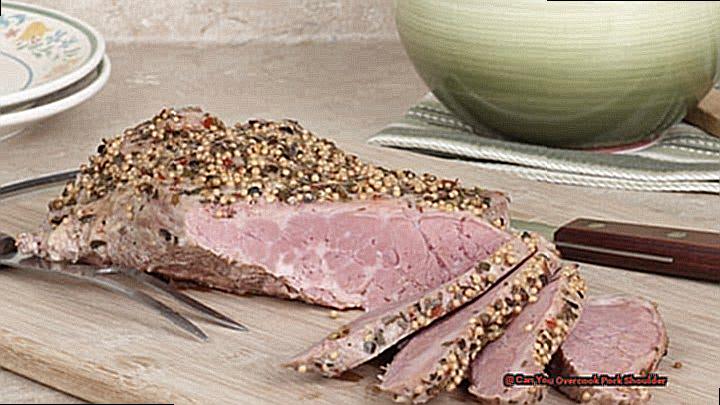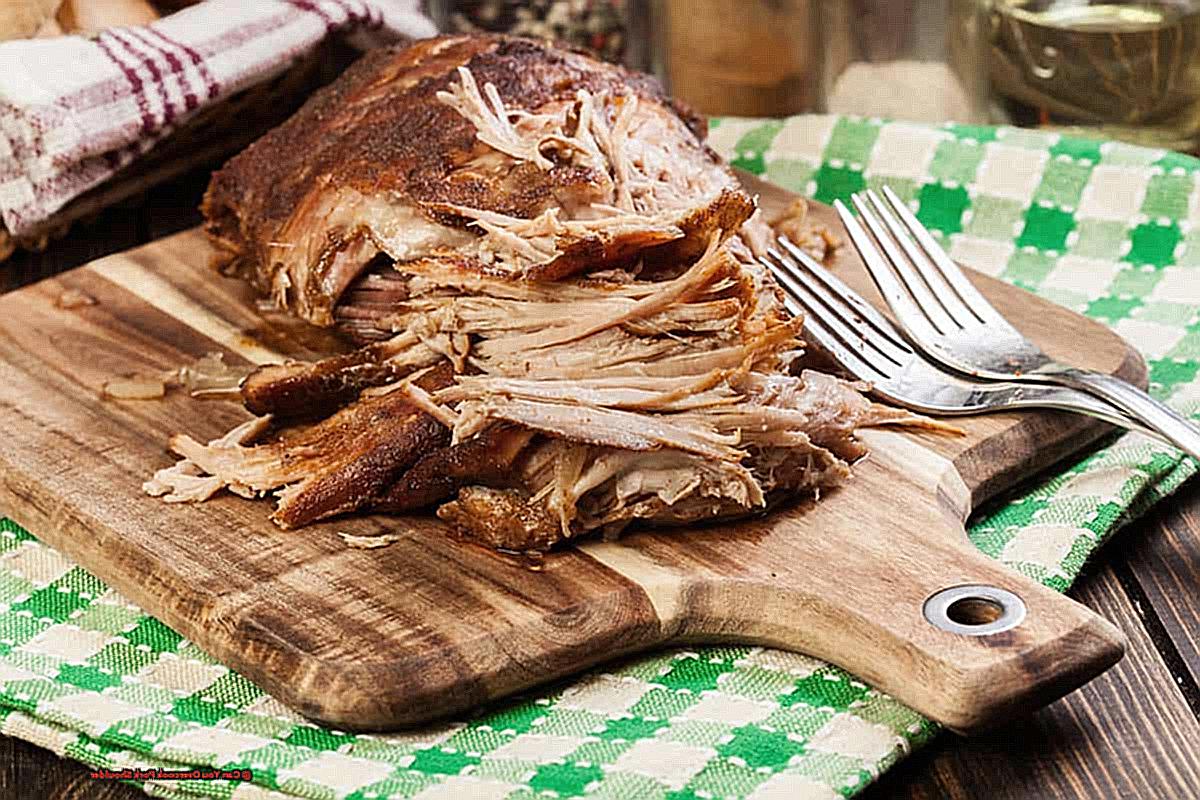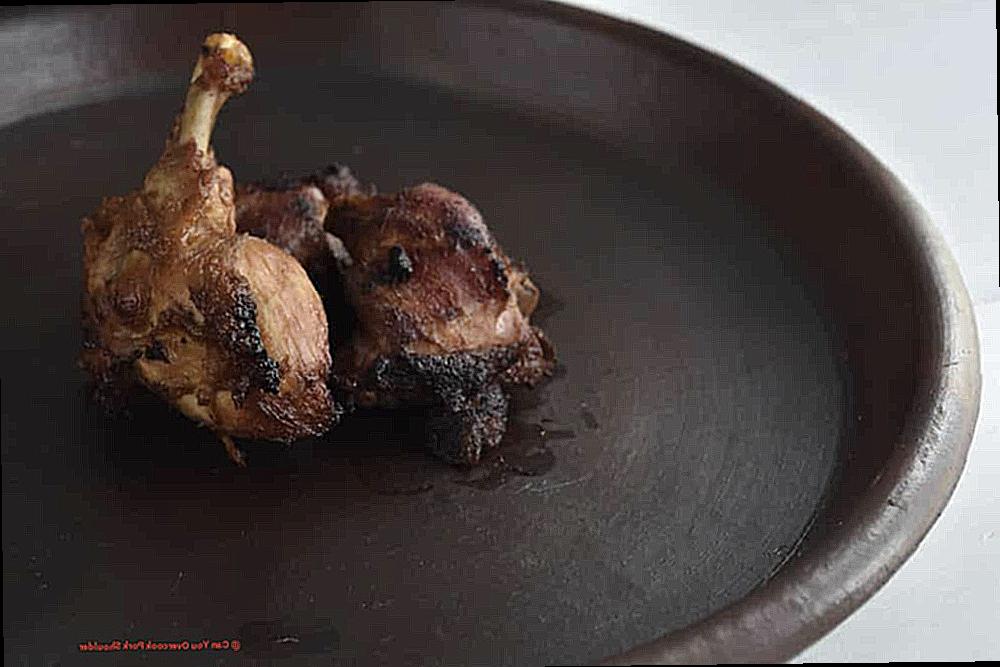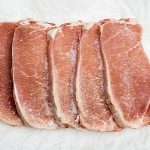Do you crave the succulent and flavorful goodness of pulled pork? Have you ever pondered the idea of overcooking this beloved cut of meat? Well, today is your lucky day as we delve into the realm of pork shoulder and its various cooking methods.
Pork shoulder is a versatile and budget-friendly piece of meat that can be prepared in multiple ways, including slow roasting and smoking.
However, many individuals fear overcooking it, resulting in a tough and dry end product.
But is this notion entirely accurate? Can pork shoulder truly be overcooked?
We’ll debunk common misconceptions and provide you with expert tips to achieve the perfect texture every time.
Furthermore, we’ll explore the science behind cooking pork shoulder and why it’s not as straightforward as setting a timer.
So don your apron and let’s embark on a culinary journey (or not?) to uncover the truth about overcooking pork shoulder.
Contents
Can you overcook pork shoulder?
Overcooking the pork shoulder is a definite possibility, and doing so can result in a dry and tough texture. To determine if your pork shoulder has been overcooked, keep an eye out for the following signs:
- Texture: The pork shoulder should be tender and easily shred with a fork when cooked correctly. However, when overcooked, the meat becomes dry and tough, making it difficult to shred.
- Color: Overcooked pork shoulder often has a darker and less appetizing color compared to properly cooked pork. This is due to the high heat or extended cooking time causing the meat to lose its pink hue and turn pale or even brown.
- Internal temperature: The internal temperature of perfectly cooked pork shoulder should fall within the range of 195-205°F. Anything above this indicates that the meat has been overcooked.
- Bone separation: If your pork shoulder has a bone-in cut, you can also check for bone separation. When cooked properly, the bone should slide out of the meat easily. If it is difficult to remove or still attached, it may be a sign of overcooking.
- Lack of moisture: Overcooked pork shoulder will have little to no moisture left in the meat. This can be observed while slicing or shredding the meat as it will not have any juices oozing out.
To avoid overcooking your pork shoulder, it is important to use proper cooking techniques such as slow cooking on low heat or sous vide with precise temperature control.
What to do with overcooked pork shoulder?
Dealing with an overcooked pork shoulder can be a frustrating experience, but it doesn’t have to be a complete disaster. Whether you made the mistake of overcooking it in a slow cooker, sous vide, or using traditional cooking methods, there are various ways to save the meat and still enjoy a delicious meal. Let’s explore some tips and tricks for fixing an overcooked pork shoulder:
Shred the meat and add sauce to counteract dryness.

| Advantages: | – Adds moisture and flavor to the meat | |
| Disadvantages: | – Can result in a saucy mess if not careful with amount of sauce used | |
| Instructions: | – Use two forks or your hands to shred the overcooked pork shoulder | |
| – Add your preferred sauce, such as barbecue or teriyaki, and mix well until evenly coated | ||
| – Serve as pulled pork sandwiches, tacos, or wraps |
Cut off burnt bits and slice for sandwiches.
 td>- Serve as sandwiches with your favorite toppings and condiments
td>- Serve as sandwiches with your favorite toppings and condiments
| Advantages: | – Removes burnt pieces without wasting the entire cut of meat | |
| Disadvantages: | – Can result in unevenly cooked meat if not careful with slicing size and thickness | |
| Instructions: | – Trim off any burnt pieces on the outside of the pork shoulder | |
| – Slice the remaining meat into thin pieces | ||
| – Marinate the slices in your preferred sauce or seasoning for at least 30 minutes |
Use the pork shoulder in fried rice or stir-fry.
<
| Advantages: | – Incorporates the overcooked pork shoulder into a different dish | |
| Disadvantages: | – Can result in a different flavor profile than traditional pork shoulder dishes | |
| Instructions: | – Cut the overcooked pork shoulder into small pieces | |
How to fix overcooked pork?
Overcooked pork can be a disheartening and vexing experience, particularly when it is a cherished cut renowned for its succulence and tenderness, such as pork shoulder. However, there are various techniques that can be employed to remedy overcooked pork and avoid a dry and tough texture.
Here are some methods for fixing overcooked pork:
- Slice or dice into smaller pieces: If the pork is only slightly overcooked, slicing or dicing it into smaller pieces can help retain moisture and add tenderness.
- Add extra sauce or gravy: Another way to restore moisture to overcooked pork is by adding extra sauce or gravy. This can greatly improve the texture and flavor of the meat.
- Use a moist cooking method: Moist cooking methods, such as braising or stewing in liquid, can help revive overcooked pork. The liquid helps keep the meat moist and tender.
- Let the pork rest wrapped in foil: After cooking, allow the pork to rest while wrapped in foil to enable the juices to redistribute throughout the meat. This can greatly enhance the overall texture and moisture of the pork.
For extremely overcooked and dry pork, more intensive methods may be necessary:
- Shred or chop into small pieces: If the pork is exceedingly overcooked, shredding or chopping it into small pieces can help mask the dry texture and make it easier to incorporate into dishes.
- Simmer in flavorful liquid: Another way to revive overcooked pork is by simmering it in flavorful liquid, such as broth or marinade. This can infuse moisture and flavor back into the meat.
- Use steamy cooking methods: Steaming is a gentle cooking method that can add moisture back into overcooked pork without further drying it out. This can be done using a steamer basket or by wrapping the meat in foil and placing it over a pot of boiling water.
- Incorporate moist ingredients when serving or reheating: When serving or reheating overcooked pork, try incorporating moist ingredients such as sauces, marinades, or broth. This can greatly improve the texture and flavor of the meat.
To prevent overcooking pork in the first place, here are some tips:
- Use a meat thermometer: Utilize a meat thermometer to monitor the internal temperature of the pork and ensure it is cooked to the recommended temperature for safety.
- Brine the pork before cooking: Brining pork before cooking can add moisture and flavor to the meat, making it less likely to dry out during cooking.
- Choose leaner cuts of meat: Leaner cuts of pork are less prone to drying out when cooked compared to fattier cuts.
- Cook using moist methods: Moist cooking methods, such as braising or stewing in liquid, can help prevent overcooking and keep the pork moist and tender.
How to prevent overcooking pork shoulder?
If you want to make sure your pork shoulder turns out perfectly tender and juicy, follow these practical tips:
Keep an eye on the internal temperature
To get the ideal texture, use a meat thermometer to monitor the pork shoulder’s internal temperature while cooking. The temperature should be between 195°F and 205°F. Once it reaches this range, you can take it off the heat.
Maintain a steady cooking temperature
Whether you’re using a slow cooker, oven, or grill, it’s crucial to maintain a consistent cooking temperature throughout the cooking process. Fluctuations in temperature can cause uneven cooking and lead to overcooked meat.
Use slow cooking methods
If you want tender pork shoulder, consider using slow cooking methods like braising or a slow cooker. These methods allow the meat to cook slowly and break down connective tissues for a tender texture.

Marinate or brine beforehand
Another way to achieve tenderness and add flavor is by marinating or brining the pork shoulder before cooking. This step is particularly important for leaner cuts of pork shoulder.
Let it rest after cooking
After taking the pork shoulder off the heat, give it at least 20 minutes to rest before slicing. This allows the juices to redistribute and continue breaking down connective tissues, resulting in even more tender and flavorful meat.
Choose a well-marbled cut
When buying pork shoulder, opt for a well-marbled Boston butt cut. The extra fat in this cut contributes to better tenderness and flavor in the final product.
| Tips for Achieving Perfectly Tender Pork Shoulder |
| Monitor the Internal Temperature |
| Maintain a Steady Cooking Temperature |
| Use Slow Cooking Methods |
| Marinate or Brine Beforehand |
| Let it Rest After Cooking |
| Choose a Well-Marbled Cut |
Why is My Smoked Pork Shoulder Tough?
There are various common causes of a tough smoked pork shoulder, but with proper cooking techniques, most of them can be avoided. Let’s take a look at the top reasons why your smoked pork shoulder might end up tough and how you can prevent it.
Not allowing the meat to rest after smoking
Resting the meat is essential as it allows the juices to redistribute throughout the cut. Slicing into a pork shoulder immediately after taking it off the smoker will result in dry and tough meat as the juices will run out. It is recommended to let it rest for at least 20 minutes before slicing to ensure a moister and more tender cut of meat.
High internal temperature of the smoker
Cooking your pork shoulder at a high internal temperature can lead to dry and tough meat. To achieve optimal results, it is suggested to maintain the smoker temperature between 225-250 degrees Fahrenheit. Using a digital thermometer to monitor the internal temperature of the meat can also help prevent overcooking.
Undercooking or overcooking
Both undercooking and overcooking can result in a tough smoked pork shoulder. Undercooked meat will be tough because the protein fibers within the shoulder muscle have not been broken down enough. On the other hand, overcooked meat will also be tough due to being cooked for too long, resulting in dry and leathery proteins. To ensure optimal tenderness, use a digital thermometer to cook your pork shoulder to an internal temperature of 195-205 degrees Fahrenheit.
Tough protein fibers
Pork shoulder is a heavily exercised muscle, making it naturally tough. However, slow cooking methods such as smoking can help break down these tough protein fibers and result in tender meat. To achieve maximum juiciness and tenderness, make sure to choose a well-marbled cut of pork shoulder.
Conclusion
To prevent overcooking in the first place, keep an eye on the internal temperature and maintain a steady cooking temperature. Slow cooking methods are also recommended, along with marinating or brining beforehand to add flavor and moisture. Allowing the meat to rest after cooking is also important for optimal tenderness.
And for those wondering why their smoked pork shoulder may turn out tough despite following these tips – it could be due to not letting the meat rest after smoking, using too high of an internal smoker temperature, undercooking or overcooking the meat, or naturally tough protein fibers.
So put on your apron and put these tips into practice for perfectly tender and juicy pulled pork every time. Remember to keep an eye on that internal temperature and give your meat some well-deserved resting time before digging in. With these expert tips in mind, you can confidently cook your next pork shoulder without any fear of overcooking.






